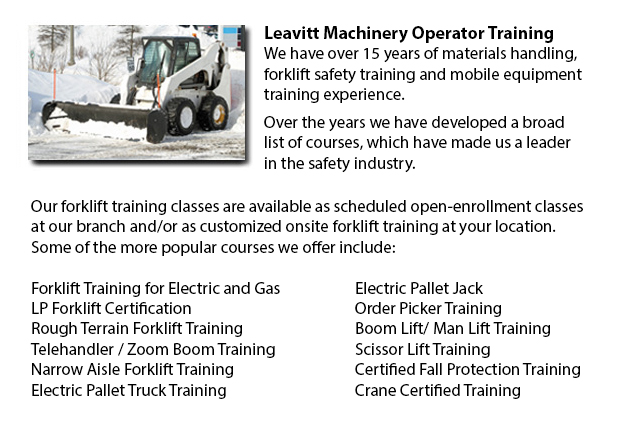
Sudbury Skid Steer Ticket - The lift arms on the skid-steer loader are placed next to the driver along with pivots at the back of the driver's shoulders. These features makes the skid-steer loader different as opposed to the traditional front loader. Because of the operator's nearness to moving booms, early skid loaders were not as safe as traditional front loaders, especially all through the operator's entry and exit. Today's' modern skid-steer loaders have numerous features to protect the driver including fully-enclosed cabs. Similar to various front loaders, the skid-steer model could push materials from one place to another, is capable of loading material into a trailer or a truck and can carry material in its bucket.
Operation
There are several times where the skid-steer loader can be used rather than a large excavator on the job location for digging holes from within. To begin, the loader digs a ramp to be used to excavate the material out of the hole. As the excavation deepens, the equipment reshapes the ramp making it steeper and longer. This is a remarkably functional way for digging beneath a structure where there is not sufficient overhead clearance for the boom of a large excavator. For example, this is a common situation when digging a basement below an existing building or home.
There is much flexibility in the accessories that the skid steer loaders are capable of. Like for instance, the traditional bucket of many of these loaders can be replaced with numerous attachments that are powered by the loader's hydraulic system, comprising pallet forks, backhoes, tree spades, sweepers, mowers, snow blades and cement mixers. Several other popular specialized attachments and buckets include wood chipper machines, grapples, tillers, stump grinder rippers, wheel saws, snow blades, trenchers, angle booms and dumping hoppers.
History
The front end 3-wheeled loader was invented during nineteen fifty seven, by Louis and Cyril Keller in their hometown of Rothsay, in the state of Minnesota. The Keller brothers created this equipment to be able to help mechanize the method of cleaning in turkey barns. This machinery was light and compact and included a rear caster wheel which enabled it to maneuver and turn around within its own length, enabling it to perform similar tasks as a traditional front-end loader.
During 1958, the Melroe brothers of Melroe Manufacturing Company in Gwinner, N.D. obtained the rights to the Keller loader. They hired the Keller brothers to continue refining their loader invention. The M-200 Melroe was actually the outcome of this particular partnership. This particular model was a self-propelled loader which was launched to the market during nineteen fifty eight. The M-200 Melroe featured a 12.9 HP engine, a 750 lb lift capacity, two independent front drive wheels and a rear caster wheel. By nineteen sixty, they replaced the caster wheel with a back axle and launched the very first 4 wheel skid steer loader that was called the M-400.
The term "Bobcat" is utilized as a generic term for skid-steer loaders. The M-400 shortly after became the Melroe Bobcat. The M-440 version has rated operating capacity of 1100 lbs powered by a 15.5 HP engine. The business continued the skid-steer development into the mid nineteen sixties and launched the M600 loader.
-
Wheel and Track Loader Training in Sudbury
Lift trucks are obtainable in several different models that have different load capacities. The majority of average forklifts used in warehouse environment have load capacities of 1-5 tons. Bigger scale units are utilized for heavier loads, like for... More -
Sudbury Aerial Lift Certification
Sudbury Aerial Lift Certification - Aerial Lift Certification is for individuals who requires an in-depth understanding of aerial lift safety. Inspectors and operators, supervisors, maintenance workers and construction craftsmen must perform a traini... More -
Sudbury Forklift Certification Schools
Sudbury Forklift Certification Schools - Within North America, forklift certification is mandatory, making forklift training programs necessary for both the company and their employees working as forklift operators. Forklift training focuses on healt... More -
Sudbury Boom Lift Operator Training
Sudbury Boom Lift Operator Training - A cherry picker refers to a type of aerial work platform. Cherry pickers include a platform or bucket at the end of a hydraulic lifting system. The device is likewise called a man lift, boom lift, basket crane or... More -
Sudbury Telehandler Certification
Sudbury Telehandler Certification - Telehandler certification programs are both for operators who have some experience driving a standard forklift and for those with no experience. The real-world training offered by these courses produces graduates w... More -
Operator Safety Training, Re-Qualification Training, In-House Instructor Training in Sudbury
Lift trucks are utilized in just about all industrial construction sites and in warehouse operations and in boat yards. The reach feature of a lift truck is a vital component used in several applications like for example when a shelving system is bei... More -
Crane / Overhead Crane / Self-Erect Crane / Truck Mounted Crane / Hydraulic Cranes Training in Sudbury
Bridge cranes or overhead cranes are a type of industrial material handling crane making use of a line and hook apparatus which runs on a horizontal beam running along two widely separated rails. Lots of overhead cranes could be seen in a long factor... More -
Sudbury Forklift Safety Training
Sudbury Forklift Safety Training - Anyone who wants to operate a lift truck should take a forklift safety training course in order to become a certified forklift truck operator. There are a variety of ways to obtain forklift training. Programs are pr... More

Forklift Certification Sudbury
TOLL FREE: 1-888-254-6157
Sudbury, Ontario
forkliftcertificationsudbury.com
Email Us
About Us


